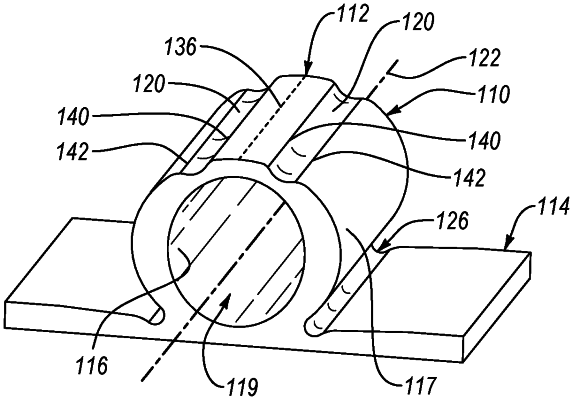| CPC F16F 1/3732 (2013.01) [F16F 1/376 (2013.01); F16F 1/377 (2013.01); F16F 1/44 (2013.01); F16F 2224/025 (2013.01); F16F 2230/0005 (2013.01); F16F 2230/36 (2013.01); F16F 2232/08 (2013.01); F16F 2234/02 (2013.01); F16F 2236/04 (2013.01)] | 20 Claims |

|
1. An elastomeric compression spring for isolating vibrations between a first part and a second part, wherein the first part is movable in a direction relative to the second part, the elastomeric compression spring comprising:
a tube elongated along a central axis of the tube, wherein:
the central axis of the tube is perpendicular to the direction;
the tube is configured to compress in the direction;
the tube comprises an outer surface comprising an initial contact line configured to initially receive contact from the first part;
the tube further comprises a plurality of ribs formed in the outer surface, parallel to the central axis, and circumferentially spaced apart from the initial contact line, such that at least one rib of the plurality of ribs is formed on opposite sides of the initial contact line; and
each one of the plurality of ribs creates a localized increase in a thickness of the tube and a stiffness of the elastomeric compression spring at each one of the plurality of ribs;
wherein:
the thickness of the tube, radially inwardly from the initial contact line, has a first thickness; and
the thickness of the tube, radially inwardly from a highest portion of each one of the plurality of ribs, has a second thickness;
the first thickness is less than the second thickness.
|